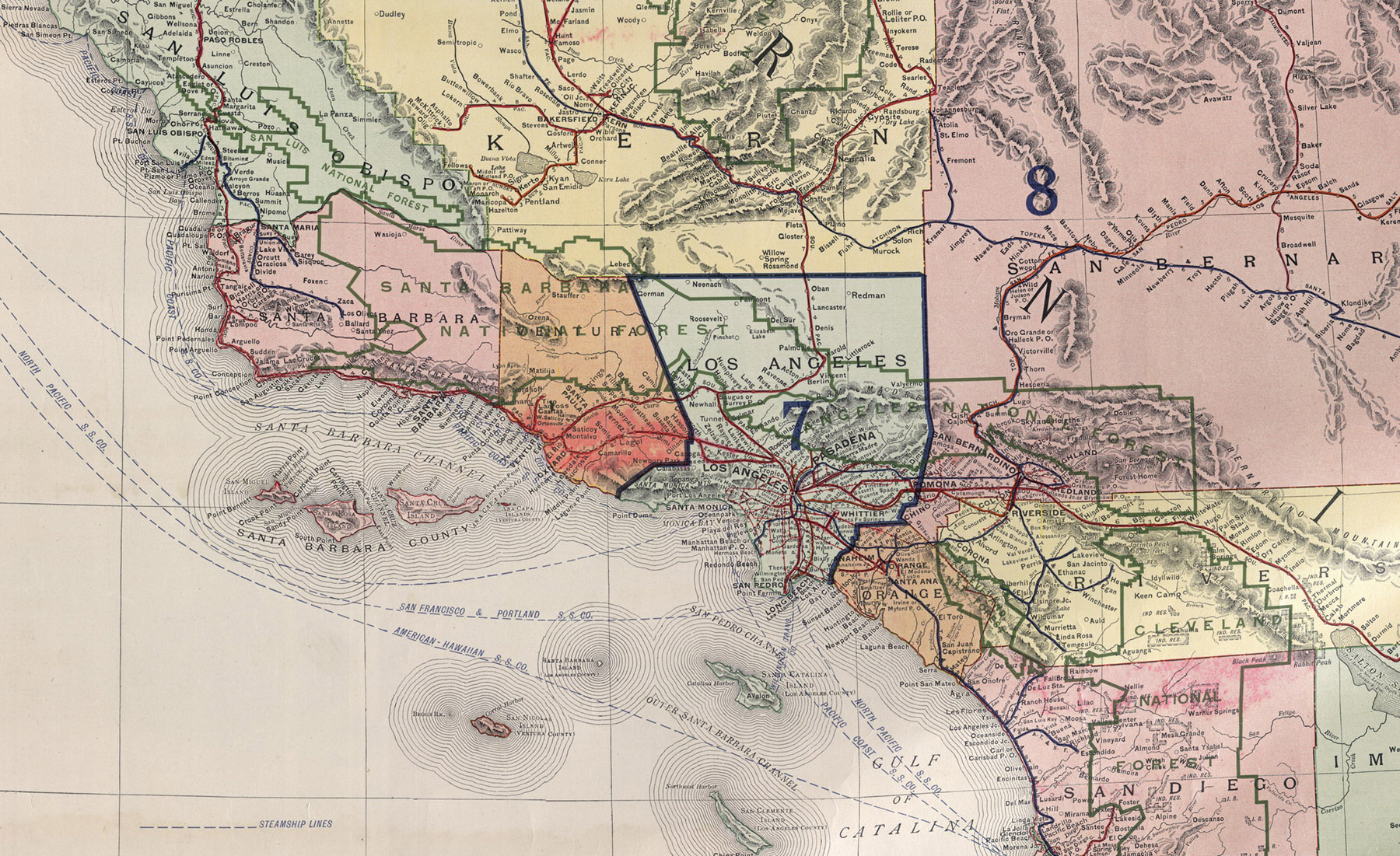
#296 Antelope Valley Poppy Reserve
The Antelope Valley Poppy Reserve is a Spring wildflower showstopper. Located in the Mojave Desert outside of Los Angeles, poppies carpet rolling hills to create a stunning mirage of orange. Bloom is generally February through May though can vary each season depending on winter rains. One look of at the massive fields of California's State Flower will be an experience you will never forget.
#291 San Gabriel Mountains National Monument
San Gabriel Mountains National Monument was created on October 10th, 2014 to protect 346,177 acres of pristine wilderness above Los Angeles. More than 15 million people are within a 90 mile radius of the monument, but a visit will feel uncrowded with 4 designated wilderness areas. 300 species of plants and animals are found here and nowhere else on Earth making it a rich biodiversity zone. The San Gabriel Mountains provide Los Angeles with 70% of its wild space and 30% of its drinking water. Native American history here dates 8,000 years.
#289 Malibu Creek State Park
Malibu Creek State Park is the premier nature wonderland of the Santa Monica Mountains. Grasslands, oak woodlands and rolling hills make up more than 8,000 acres of scenic beauty. The area was once home to the Native American Chumash who had a village here called Talepop. Paramount Pictures & 20th Century Fox both used the area for filming including M*A*S*H & The Planet of the Apes. Hiking trails of every length wind through canyons covered in wildflowers each Spring.
#288 Hollywood Walk of Fame
The Hollywood Walk of Fame has been around since 1958 and represents 2,500 stars of film, television, music, radio and theatre. With 10 million annual visitors, it is one of the most visited spots in the country. Since 1968, it has been a requirement for an honoree to attend the unveiling of the star. The Hollywood Chamber of Commerce accepts nominations for those that have been in their industry for at least five years and give to charity. Enjoy 15 blocks of Hollywood stars from the past and present.
#286 Getty Center
Built on the edge of the Santa Monica Mountains, The Getty Center is a grand collection of art, architecture and gardens overlooking the Los Angeles Metropolis. It opened in 1997 at a cost of $1.3 billion dollars and was designed by famed architect Richard Meier. More than 1.3 million visitors come each year to enjoy famed European paintings, sculptures, photography and skyline views.
#278 South Coast Botanic Garden
South Coast Botanic Garden in Palos Verdes Hills contains 87 landscaped acres of 150,000 plants and trees from all around the world. With its arid desert cacti, palm groves, fruit orchard and fuchsia gardens, the collection has something everyone will love. The garden also shows our ability to change the past. It is built upon an open mine pit which turned into a landfill for eight years from 1957-65. Today, the gardens cover 3.5 million tons of garbage but is a great example of land recycling.
#277 Santa Susana Pass State Historic Park
Santa Susana Pass State Historic Park preserves rocky canyons, Native American sites and an historic stagecoach route. Tongva, Chumash, and Tataviam Native Americans used this spot as a trading route and many remnants still remain. From 1861-76, it served as the Old Santa Susana Stage Road which connected travelers from Los Angeles to Santa Barbara & San Francisco. In the 1900's, it served as the backdrop of the old west for the adjacent RKO Studios.
#270 Backbone Trail
Backbone Trail is a National Trail in the Santa Monica Mountains National Recreation Area. After more than 50 years in the works, the trail is finally complete. It runs for 67 miles from Will Rogers State Park to Point Mugu State Park. From majestic ocean-view peaks, chaparral-covered hills and winding canyons, the trail will keep you going at each turn. Several access points make this trail available for all skill levels at any duration.
#269 Mentryville
Mentryville Boomtown was named after Charles Alexander Mentry who drilled California's first successful oil well here in 1876. It was the world's longest continually operating well that lasted until 1990. Today, it is a park run by the Santa Monica Mountains Conservancy where Charles' historic home and barn still remain beneath the Santa Susana Mountains. Trails lead to historic ruins as well as canyons of chaparral and coast live oak.
#267 Cabrillo Beach
Cabrillo Beach was named after Juan Rodríguez Cabrillo, famous Portuguese explorer and first European to navigate the Californian coast. It is adjacent to the Port of Los Angeles and also has a fishing pier separated by breakwater to control strong waves. A bathhouse built for the 1932 Olympic Games is an historic landmark still used today. The beach is also the closest stretch of coast to Catalina Island making it a prime spot to enjoy the views.


























